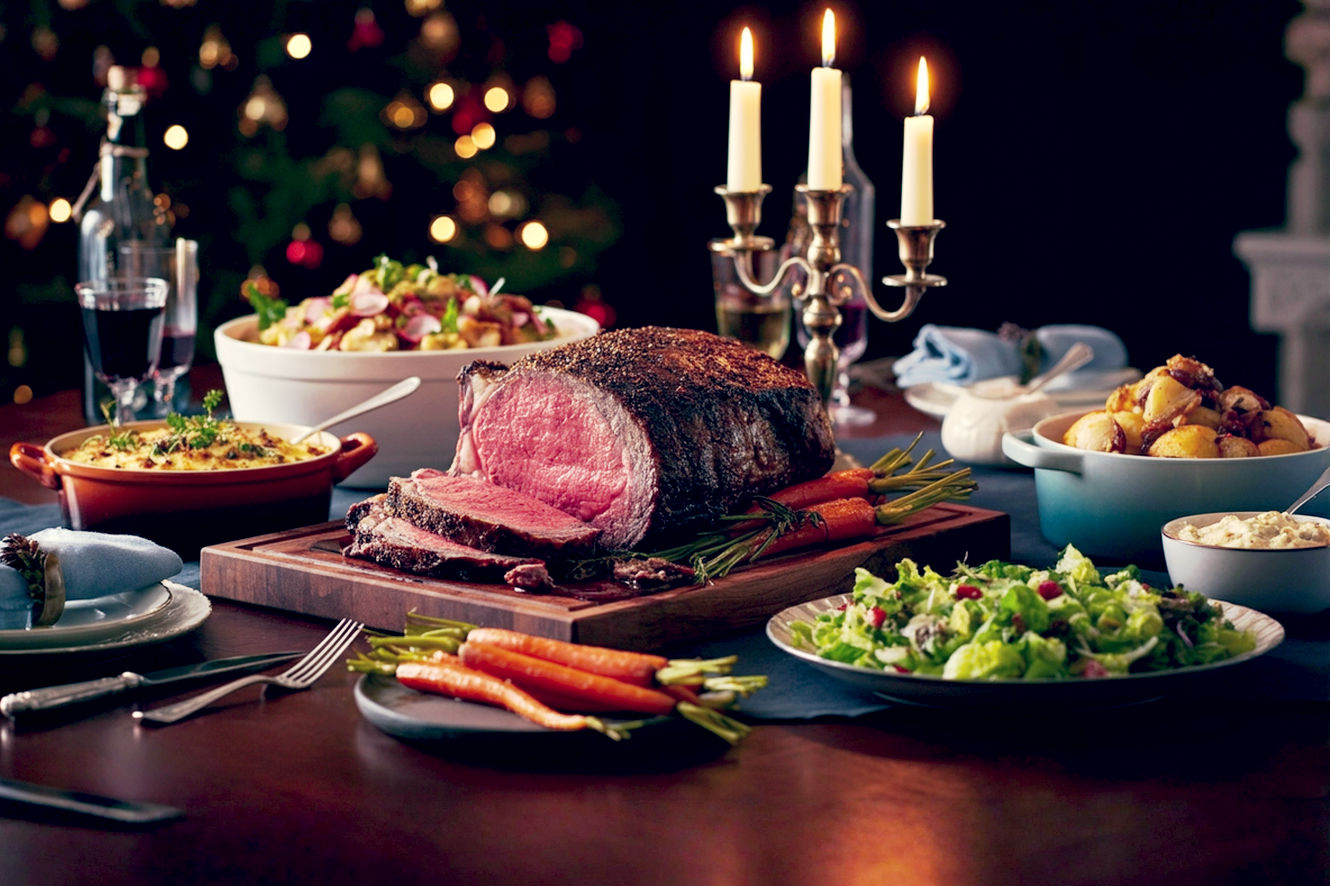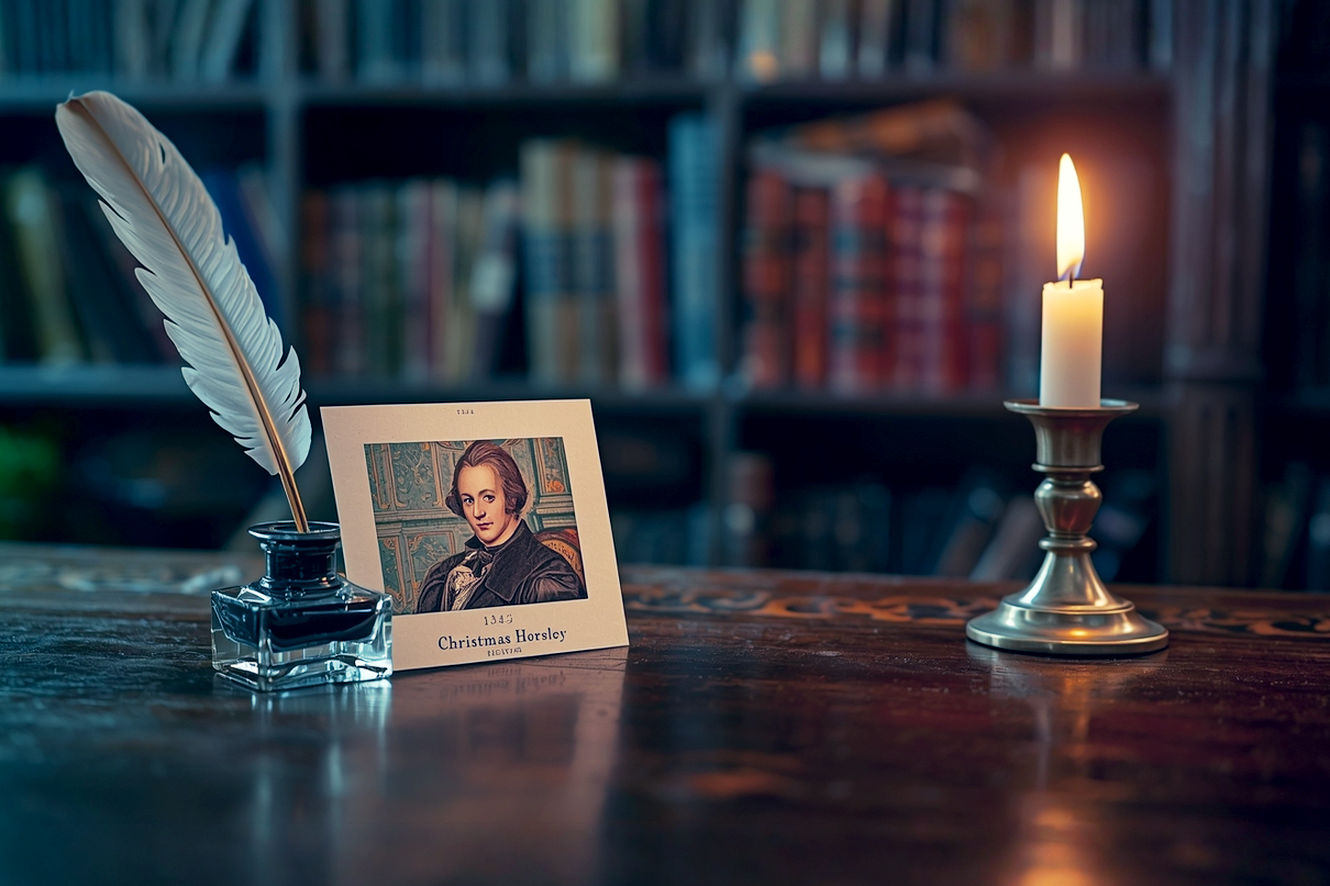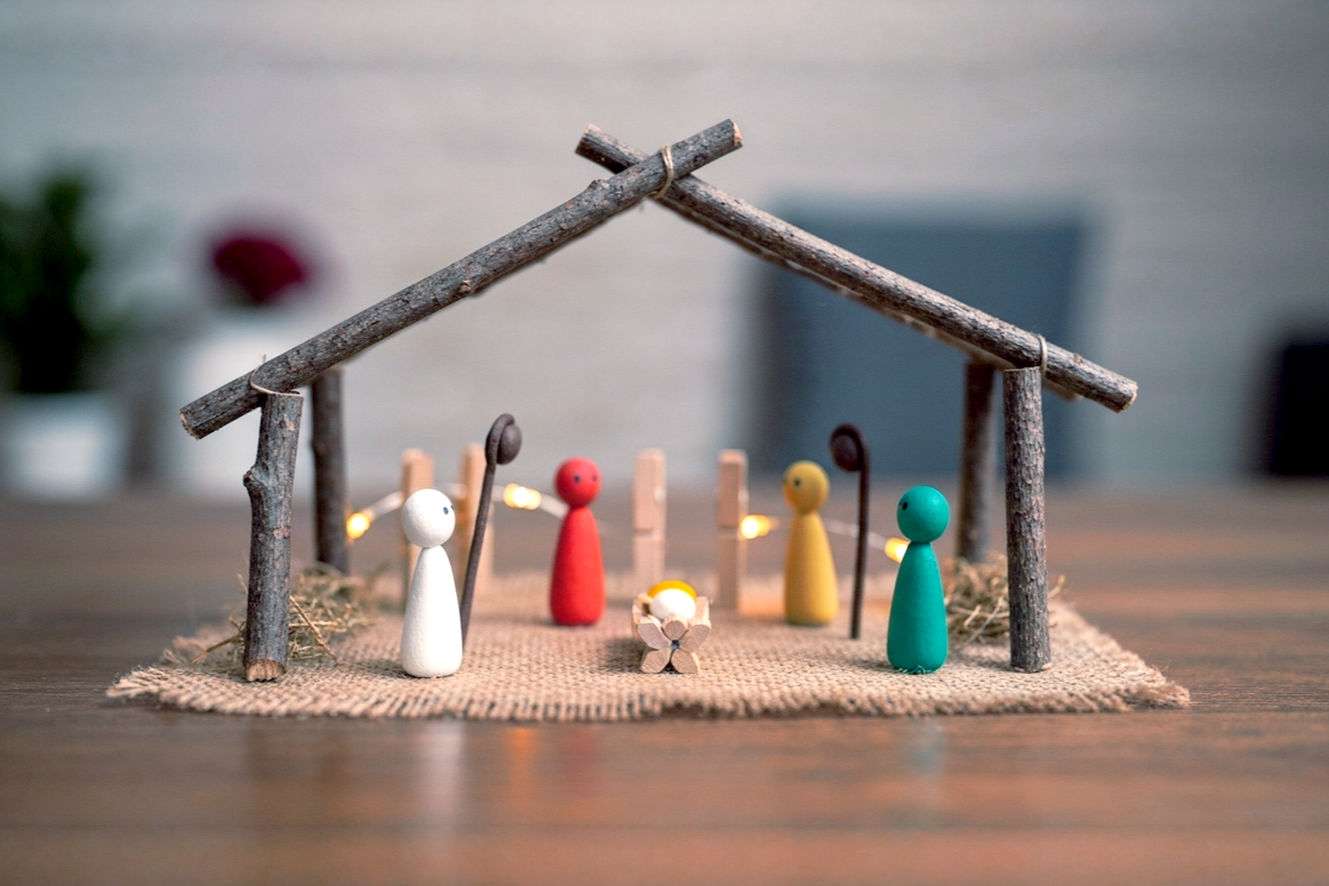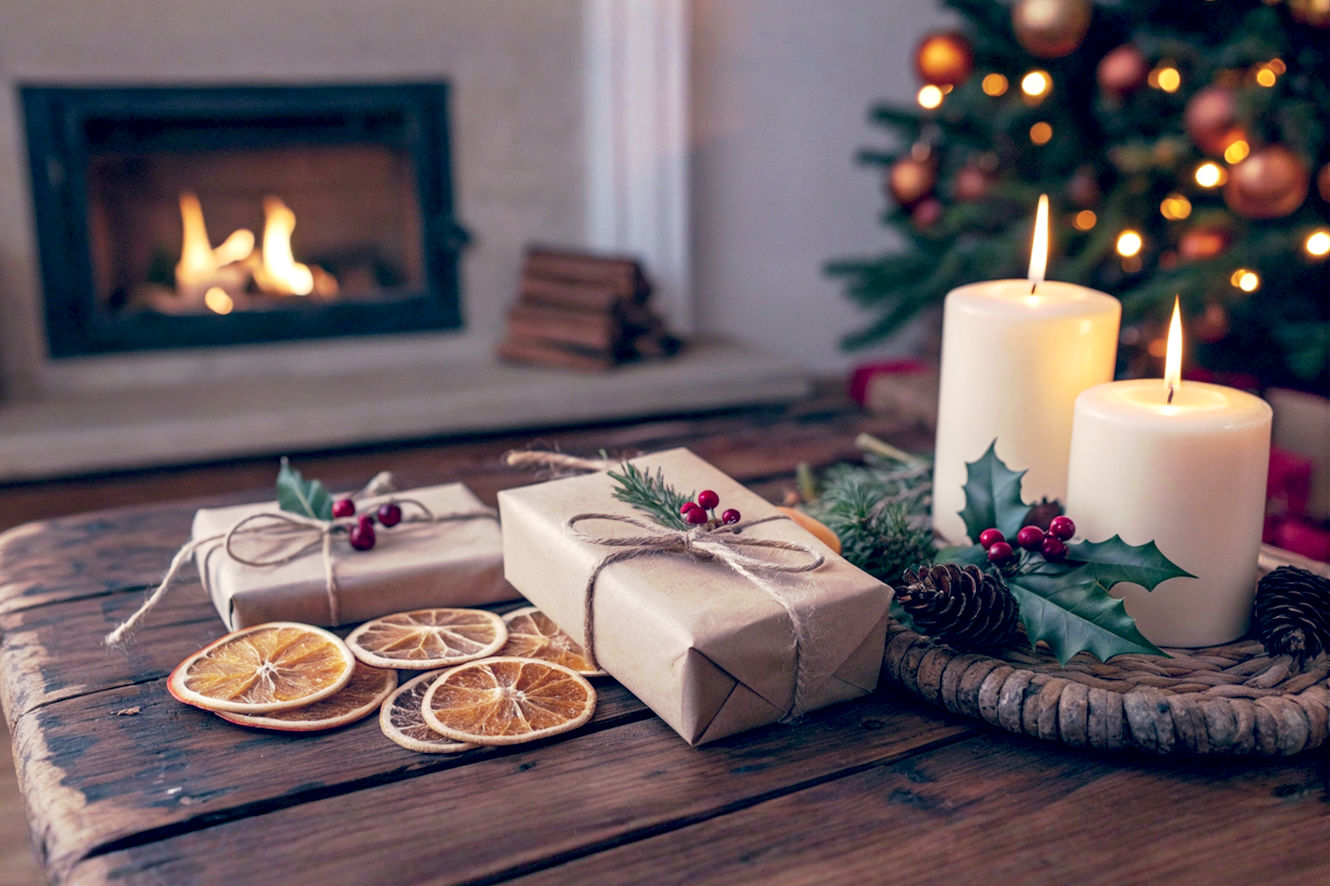This post may contain affiliate links. If you make a purchase through these links, we may earn a commission at no additional cost to you.
The Christmas tree, adorned with shimmering lights and sparkling ornaments, stands as a quintessential symbol of the holiday season. Yet, its journey from ancient pagan rituals to the dazzling centerpiece of modern celebrations is a rich tapestry woven with threads of history, culture, and evolving traditions.
Far from being a static symbol, the decorated Christmas tree has undergone profound transformations, reflecting societal changes, technological advancements, and shifts in religious and commercial practices. This article will embark on an in-depth exploration of how this beloved tradition came to be, tracing the fascinating evolution of its decorations from simple, natural elements to the intricate, mass-produced marvels we know today.
Ancient Roots and Pre-Christian Traditions: The Enduring Power of Evergreens
Long before the advent of Christianity, various cultures across the globe revered evergreen trees, particularly during the bleakest days of winter. This deep-seated appreciation for trees that remained green when all others withered laid the foundational symbolism for what would eventually become the Christmas tree. These ancient practices weren’t just about aesthetics; they were deeply rooted in a yearning for life, light, and renewal during the darkest time of the year.
Evergreen Symbolism Across Cultures: A Universal Beacon of Life
The consistent green of evergreens, even amidst winter’s harsh grip, made them potent symbols of life, rebirth, and enduring vitality for many ancient civilizations. For the ancient Egyptians, palms were sacred, representing eternal life and resurrection, often brought indoors during the winter solstice. The Romans, during their Saturnalia festival in mid-December, decorated their homes and temples with evergreen boughs to celebrate the return of light and the promise of spring. These boughs symbolized fertility and the continuation of life.
The Celts, who held sacred groves of trees, used evergreens like holly, ivy, and mistletoe to ward off evil spirits and celebrate the resilience of nature during the winter solstice. They believed these plants held magical powers because they defied winter’s death. Similarly, the Norse people used evergreens to symbolize the renewal of life and the sun god, Balder, during their Yule celebrations. They saw the evergreens as a promise that spring would return, bringing warmth and growth back to the land. This widespread, pre-Christian reverence for evergreens established a powerful symbolic connection between these trees and the triumph of life over winter’s darkness, a connection that would later be absorbed into Christian traditions.
Germanic Paganism and the Yule Tree: The Direct Ancestor
The most direct lineage of the modern Christmas tree can be traced back to the Germanic pagan traditions, particularly their celebration of Yule, a winter solstice festival. During Yule, which typically ran from late December to early January, Germanic peoples would bring evergreen trees, or large branches, into their homes. This wasn’t merely decorative; it was a ritualistic act intended to symbolize the continuation of life and the warding off of evil spirits during the longest nights of the year.
These early “Yule trees” weren’t adorned with glass baubles or electric lights. Instead, their decorations were practical, symbolic, and often edible. People would hang nuts, apples, and berries on the branches, representing fertility and the harvest. Sometimes, small candles were placed on the branches, a dangerous but potent symbol of light returning to the world, mirroring the sun’s eventual return. The act of bringing the tree indoors was a way to connect with nature’s enduring spirit and to invite protection and prosperity into the home for the coming year. This practice, deeply embedded in Germanic folklore and spirituality, laid the groundwork for the Christian adoption and transformation of the evergreen tree into the Christmas tree.
The Emergence of the Modern Christmas Tree: Germany’s Gift to the World
While the roots of decorated evergreens stretch back to ancient times, the specific tradition of the “Christmas tree” as we recognize it today truly began to take shape in Germany. This evolution was a gradual process, blending pagan customs with Christian symbolism, and eventually spreading across continents, largely due to royal influence and evolving societal norms.
Early German Traditions (16th-18th Centuries): From Paradise Tree to Christkindlbaum
The Christmas tree tradition, in its more recognizable form, is widely believed to have originated in 16th-century Germany, particularly in the Alsace region (which today straddles France and Germany). Historical records suggest that by the 1500s, devout German Christians began decorating trees with candles and other simple items. One popular theory links the Christmas tree to the “Paradise Tree,” a fir tree decorated with apples used in medieval German mystery plays performed on Christmas Eve. These plays depicted the story of Adam and Eve and the Tree of Knowledge, making the fir tree a central prop. The apples symbolized the forbidden fruit, and wafers (representing the Eucharist) were sometimes added.
Over time, this “Paradise Tree” evolved into the “Christkindlbaum,” or “Christ Child’s Tree.” Families would bring fir trees into their homes and adorn them with lit candles, symbolizing Christ as the light of the world. Other early decorations included apples, nuts, and simple paper flowers or chains. These items were not only decorative but often edible, serving as treats for children on Christmas morning. The tradition was initially more prevalent among Protestant families, who saw it as a counterpoint to the Catholic Nativity scene, emphasizing the home and family celebration of Christmas. This period marked the crucial transition from a general winter evergreen tradition to a specifically Christianized “Christmas tree” with its own unique set of symbolic decorations.
Royal Influence and Global Spread (19th Century): A Symbol of Domesticity
The Christmas tree remained largely a German custom until the 19th century, when it began its rapid ascent to global popularity, largely thanks to royal endorsement and media dissemination. The most significant catalyst for its spread was Queen Victoria of Great Britain and her German husband, Prince Albert.
Prince Albert, missing his childhood traditions, introduced a decorated Christmas tree to Windsor Castle in the 1840s. The pivotal moment came in 1846 when the Illustrated London News published an engraving of Queen Victoria, Prince Albert, and their children gathered around a decorated Christmas tree. This image, widely circulated, presented the Christmas tree as a symbol of happy, middle-class domesticity and family values. It quickly captured the public’s imagination in Britain and, crucially, in the United States, where the image was reprinted.
American families, eager to emulate the royal family and embrace new traditions, rapidly adopted the Christmas tree. German immigrants had already brought the custom to America, but the royal endorsement gave it widespread appeal. By the late 19th century, the Christmas tree had transformed from a regional German custom into a cherished holiday tradition across the Western world. Its appeal lay not just in its festive appearance but also in its association with warm family gatherings, childhood wonder, and a sense of shared cultural identity. This period marked the true globalization of the Christmas tree, setting the stage for the dramatic evolution of its decorations.
The Evolution of Decorations: From Natural to Manufactured Marvels
The decorations themselves have undergone a remarkable transformation, reflecting ingenuity, changing aesthetics, and industrial advancements. What began as simple, natural adornments evolved into elaborate, manufactured creations, each with its own story.
Edible and Natural Adornments: The First Ornaments
The very first Christmas tree decorations were, quite literally, straight from nature or the kitchen. These early adornments were deeply symbolic and often served a dual purpose: to decorate and to provide a treat.
Apples were among the most common and significant early decorations. They were hung on the branches, particularly on “Paradise Trees,” to symbolize the forbidden fruit from the Tree of Knowledge in the Garden of Eden. Their vibrant red color also added a festive touch. Beyond their symbolic weight, apples were readily available and durable enough to hang.
Nuts, such as walnuts and hazelnuts, were also popular. They were often gilded or painted to add sparkle, or simply strung together. Like apples, they represented fertility and abundance. Cookies and gingerbread cut into festive shapes (stars, angels, hearts) were baked specifically for the tree. These edible ornaments were a delight for children, who could pluck them off the tree on Christmas morning. Dried fruits, like oranges and lemons, were sliced and strung, offering both visual appeal and a pleasant aroma. Popcorn and cranberry garlands, strung on thread, added a simple yet charming touch, creating a continuous line of natural decoration that draped elegantly over the branches. These natural decorations underscored the connection between the winter harvest, the bounty of the earth, and the festive spirit, making the tree a truly interactive and sensory experience.
Candles: The Dangerous Glow of Early Trees
Perhaps the most iconic, yet undeniably hazardous, early decoration was the lit candle. Candles were placed on Christmas trees to symbolize Christ as the Light of the World, bringing warmth and illumination during the darkest time of the year. The flickering glow created a magical, almost ethereal atmosphere, especially in dimly lit homes.
Attaching candles to tree branches was a precarious affair. Early methods involved simply melting a bit of wax onto the base of the candle and pressing it onto a branch, or using pins and wires to secure them. As the tradition evolved, specialized small clips or holders were developed to grip the branches more securely. Despite these efforts, the inherent fire risk was immense. Dry pine needles and open flames were a recipe for disaster, and many homes were lost to Christmas tree fires. Families would often keep buckets of water or sand nearby and only light the candles for short periods, under strict supervision. The desire for this magical illumination, despite the danger, highlights the profound symbolic importance of light during the holiday season, paving the way for safer alternatives like electric lights to eventually emerge.
Handcrafted and Folk Art Decorations: A Personal Touch
Before mass production, Christmas tree decorations were predominantly homemade, reflecting the creativity and resourcefulness of families. These handcrafted items imbued each tree with a unique, personal charm and often became cherished family heirlooms.
Paper chains were a staple, made by cutting strips of colored paper and gluing them into interlocking rings, creating long, festive garlands. Folded paper ornaments, often intricate stars or geometric shapes, showcased delicate craftsmanship. Straw ornaments, particularly popular in Scandinavia and Germany, were fashioned from dried straw into figures like angels, stars, or animals, symbolizing the simplicity of the Nativity and the agricultural roots of the season.
Carved wooden figures, often depicting angels, saints, or animals, were another common form of folk art decoration, especially in regions with strong woodworking traditions. Fabric ornaments, sewn from scraps of felt or cloth, could be simple shapes or more elaborate stuffed figures. These homemade decorations were not only economical but also fostered a sense of family togetherness as everyone participated in their creation. They represented a direct connection to the spirit of the season, where the act of decorating was as important as the final display, emphasizing personal effort and shared joy over commercial acquisition.
The Rise of Glass Ornaments: From Lauscha to Global Industry
The introduction of glass ornaments revolutionized Christmas tree decorating, adding unparalleled sparkle and sophistication. The origin of these iconic decorations can be precisely traced to the small town of Lauscha, Germany, in the mid-19th century.
In the 1840s, glassblowers in Lauscha, already renowned for their glass eyes and laboratory equipment, began experimenting with creating decorative glass spheres. The first commercially produced glass ornaments were called “Kugels.” These were heavy, thick-walled glass balls, often silvered on the inside to give them a reflective sheen. The process involved hand-blowing molten glass into molds, then coating the inside with a solution of silver nitrate (a safer alternative to earlier mercury or lead-based silvering solutions). Once silvered, the Kugels were often hand-painted with vibrant lacquers and intricate designs, or adorned with glitter.
The popularity of these glass ornaments exploded, especially after the American merchant F.W. Woolworth discovered them on a trip to Germany in the 1880s. He began importing them to his five-and-dime stores in the United States, making them affordable and accessible to the general public. The delicate beauty and reflective qualities of glass ornaments quickly made them a must-have for Christmas trees, transforming them from simple, natural displays into glittering spectacles. This innovation marked a significant shift towards the industrialization and commercialization of Christmas decorations, laying the groundwork for a global industry.
Tinsel and Lametta: Adding Sparkle and Shine
The shimmering strands of tinsel that drape over Christmas trees have a surprisingly old and luxurious origin, dating back to 17th-century Germany, specifically the city of Nuremberg.
Originally, tinsel was known as “Lametta,” a German term derived from the Latin word for “thin plate.” The very first Lametta was made from shredded strands of real silver. Artisans would hammer silver into incredibly thin sheets and then cut it into fine, shimmering strips. The purpose of this precious decoration was to simulate the appearance of ice and snow glistening on the tree branches, adding a touch of winter magic and luxury. Because it was made of real silver, early Lametta was quite expensive and therefore reserved for wealthier families.
As demand grew and manufacturing techniques improved, cheaper alternatives were sought. Eventually, lead was used to produce tinsel, as it was easier to work with and less costly than silver. However, lead tinsel was heavy and, more importantly, toxic, especially to children. By the mid-20th century, concerns about lead poisoning led to its discontinuation. Today, tinsel is predominantly made from plastic (PVC or PET), which is lightweight, inexpensive, and safe. Despite its evolution in material, tinsel’s purpose remains the same: to add a captivating shimmer and festive sparkle, transforming the tree into a dazzling display of light and reflection.
Electric Lights: Revolutionizing Tree Safety and Display
The most transformative innovation in Christmas tree decorating undoubtedly came with the advent of electric lights. Before their invention, the flickering glow of candles, while beautiful, posed an enormous fire hazard. The solution arrived in 1882, thanks to Edward Johnson, a colleague of Thomas Edison.
Johnson, then vice president of the Edison Electric Light Company, was the first to publicly display a Christmas tree illuminated with electric lights. His tree, located in his New York City home, was adorned with 80 hand-blown, hand-painted light bulbs in red, white, and blue, strung together and powered by a generator. This was a revolutionary concept, but initially, it was a luxury only the very wealthy could afford. The cost of the lights themselves, the need for a generator, and the expense of hiring an electrician to wire them made them inaccessible to the average family.
The adoption of electric Christmas lights was gradual. For decades, they remained largely a novelty for public displays or the homes of the elite. However, as electricity became more widespread and affordable, and as companies like General Electric began mass-producing strings of miniature bulbs, electric lights slowly replaced candles. By the 1920s and 1930s, electric lights had become a standard feature on Christmas trees, offering unparalleled safety and convenience. They allowed trees to be lit for extended periods without supervision, transforming them into brilliant, glowing beacons that could be enjoyed throughout the entire holiday season, both indoors and out. This technological leap not only enhanced the beauty of the Christmas tree but also made the tradition safer and more enduring.
Symbolism and Cultural Significance of Decorations: More Than Just Sparkle
Beyond their aesthetic appeal, Christmas tree decorations are steeped in rich symbolism, with each ornament often carrying a deeper meaning rooted in Christian beliefs, ancient traditions, and cultural folklore. Understanding these meanings adds another layer of appreciation to the festive display.
The Enduring Meanings Behind the Ornaments: A Language of Light and Hope
Many common Christmas tree ornaments hold specific symbolic significance:
- Stars: The star, particularly the one placed at the very top of the tree, represents the Star of Bethlehem, which guided the Three Wise Men to the birthplace of Jesus. It symbolizes hope, guidance, and divine light.
- Angels: Often placed at the top of the tree, angels symbolize the angel Gabriel who announced the birth of Jesus to Mary, or the choir of angels who sang to the shepherds. They represent peace, joy, and divine messages.
- Bells: The ringing of bells is associated with joy, celebration, and the announcement of good news. In many traditions, bells were rung to ward off evil spirits and welcome good tidings.
- Candy Canes: The shape of the candy cane is often said to represent a shepherd’s crook, symbolizing Jesus as the “Good Shepherd” who guides his flock. When inverted, it forms the letter “J” for Jesus. The red stripes are said to represent the blood of Christ, and the white symbolizes purity.
- Wreaths: While often hung on doors, miniature wreaths can also be found on trees. Their circular shape symbolizes eternal life and unending love, as they have no beginning or end.
- Colors: The traditional Christmas colors also carry meaning. Green represents life, growth, and the eternal nature of God (echoing the evergreen itself). Red symbolizes the blood of Christ, love, and passion. Gold represents royalty, divinity, and light.
These symbols are not just decorative elements; they are visual narratives that tell the story of Christmas, connecting the modern celebration to its ancient and spiritual roots.
Regional Variations and Modern Interpretations: A Global Tapestry
As the Christmas tree tradition spread globally, different cultures adopted and adapted it, leading to unique regional variations in decorations and styles. While the core elements remained, local craftsmanship, materials, and cultural narratives influenced the specific ornaments. For example, in some Scandinavian countries, straw ornaments (like the Yule goat) remained prominent, reflecting their agricultural heritage. In Eastern Europe, intricate hand-painted wooden ornaments or delicate lacework might be more common.
In the modern era, the interpretation of Christmas tree decorating has diversified even further. While traditional themes remain popular, there’s a growing trend towards themed trees, where every ornament adheres to a specific color scheme, character set (e.g., Disney, superheroes), or concept (e.g., “winter wonderland,” “rustic farmhouse”). Minimalist designs have also gained traction, focusing on simplicity, natural elements, and fewer, carefully chosen ornaments. Furthermore, there’s an increasing emphasis on sustainable and eco-friendly decorations, using recycled materials, natural elements, or purchasing ethically produced ornaments. This reflects a broader societal shift towards environmental consciousness and a desire to reduce waste during the holidays. These modern interpretations show that while the core tradition endures, it continues to evolve, reflecting contemporary values and aesthetics.
The Commercialization and Future of Christmas Tree Decorations
The journey of Christmas tree decorations from simple, homemade adornments to a multi-billion-dollar global industry is a testament to the power of tradition, innovation, and consumer demand. The Industrial Revolution played a pivotal role in this transformation, making decorations accessible to nearly everyone.
From Homemade to Mass Production: The Industrial Revolution’s Impact
The Industrial Revolution in the 19th century profoundly changed the landscape of Christmas tree decorations. Before this era, most ornaments were either natural, edible, or painstakingly handcrafted at home. This limited their availability and often made them time-consuming to produce. However, the rise of factories, new manufacturing techniques, and improved transportation systems dramatically altered this.
The ability to mass-produce items like glass ornaments (as seen with Lauscha’s industry), paper decorations, and eventually electric lights meant that these items could be made quickly, in large quantities, and at a much lower cost. This shift made Christmas tree decorating accessible to a wider range of socioeconomic classes, no longer confined to the wealthy. Companies specializing in holiday decor emerged, developing efficient production lines for everything from tinsel to baubles. This industrialization democratized the Christmas tree, allowing more families to participate in the tradition and adorn their trees with a greater variety of manufactured goods, transforming it from a niche custom into a widespread cultural phenomenon.
The Global Market and Contemporary Trends: A World of Choice
Today, the Christmas decoration industry is a truly global market, driven by design trends, consumer preferences, and technological advancements. Manufacturing hubs around the world produce an astonishing array of ornaments, lights, and tree accessories. This global supply chain means consumers have an unprecedented choice, from traditional glass baubles to highly specialized, themed, or personalized items.
Pop culture plays a significant role in contemporary trends, with licensed ornaments featuring characters from movies, TV shows, and video games becoming incredibly popular. Personalized ornaments, often featuring names, dates, or custom messages, have also seen a surge in demand, allowing families to commemorate special events or create unique keepsakes. Beyond aesthetics, there’s a growing movement towards eco-friendly and sustainable options, including ornaments made from recycled materials, natural fibers, or sustainably sourced wood. Consumers are increasingly seeking out decorations that align with their environmental values, pushing manufacturers to innovate in this area. Furthermore, advancements in lighting technology, such as LED lights with programmable color changes and smart home integration, continue to evolve how trees are illuminated, offering greater energy efficiency and creative control.
Preserving Tradition in a Modern World: Balancing Commerce and Heart
In an era of mass production and global commercialization, the challenge lies in preserving the historical and personal significance of Christmas tree decorating. While the convenience and variety offered by the modern market are undeniable, many families still cherish the act of creating their own ornaments, passing down heirlooms, or selecting special pieces that hold sentimental value.
The Christmas tree remains a powerful symbol of family, tradition, and the spirit of giving. Balancing the commercial aspects—the desire for new, trendy decorations—with the deeply personal and historical roots of the tradition is key. Many people find joy in mixing new, store-bought items with treasured antique ornaments or handmade creations, creating a tree that tells a unique family story. Ultimately, the enduring magic of the Christmas tree lies not just in its dazzling appearance, but in the layers of history, symbolism, and personal memories that each decoration represents, connecting us to generations past and the timeless spirit of the holiday season.
The Christmas tree, with its ever-evolving array of decorations, stands as a living testament to humanity’s enduring need for light, hope, and celebration during the darkest days of winter. From ancient pagan rituals to its modern incarnation as a global symbol of joy, the decorated evergreen has absorbed and reflected countless cultural influences, technological innovations, and personal expressions of festivity. Each ornament, whether a simple apple or a sophisticated glass bauble, carries a thread of history, weaving together a narrative that continues to captivate and inspire.






